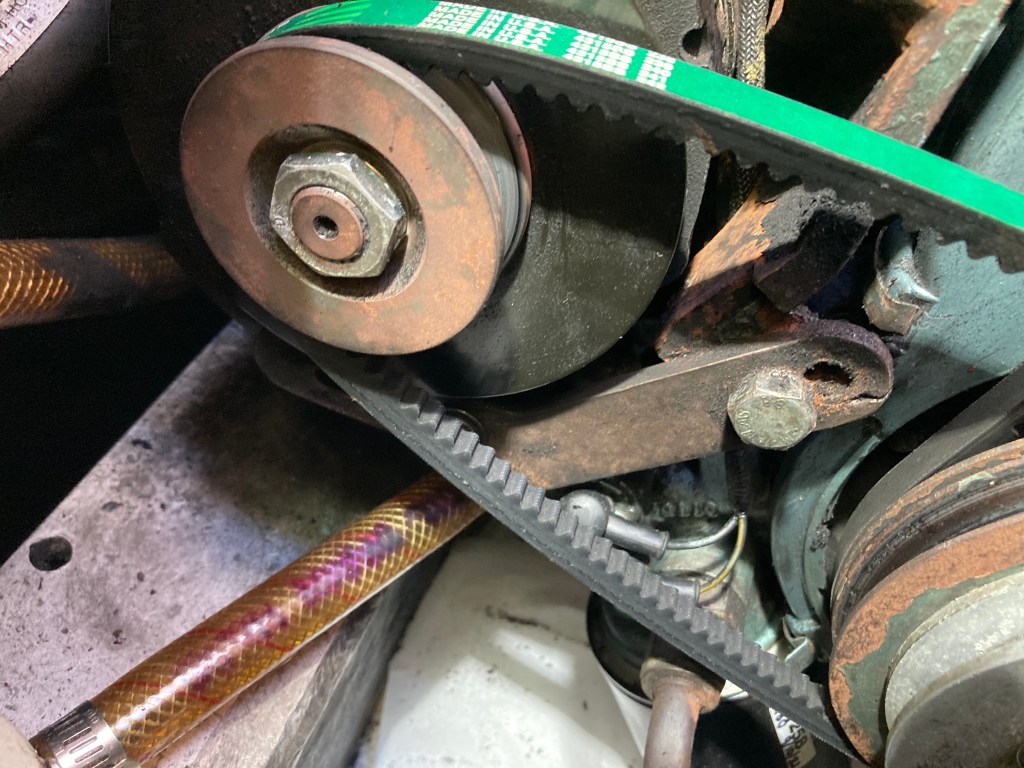
February 22, 2022
To-day… Tue-sday… month zero-tw0, day two-two, year two-zero-two-two. Right day, wrong to-ol. Might as well be two-twenty-two in the afternoon.
Okay. That’s it. Enough of the tooooos.
Second repair in a row. An impact wrench is now officially on the list.
The impact wrench wouldn’t have sorted everything with the furler repair that we completed just before our Panama Canal transit, but it sure as hell would have helped.
This time it made all the difference.
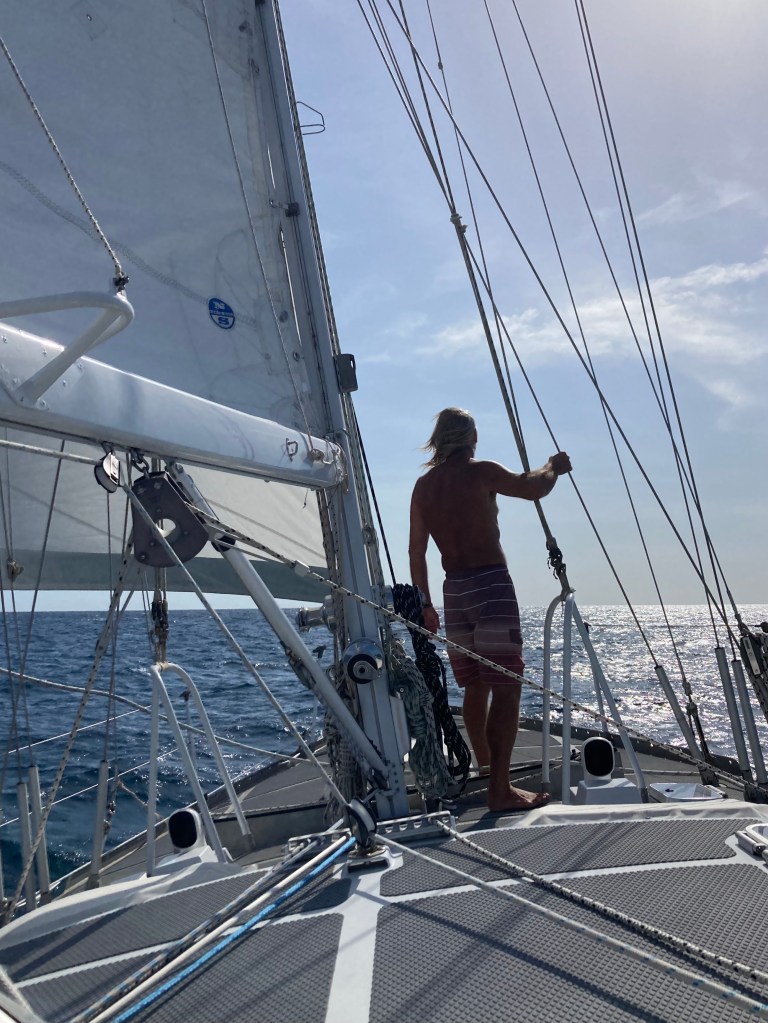
We departed from Las Perlas cautiously optimistic. Erratic weather forecasts left us completely guessing on what we would encounter once underway. Leaving early in the afternoon provided us with an option to bail out the following morning just after clearing Punta Mala (Bad Point…great name) if things were going against us, or continue if things were looking good.
After threading our way through an endless convoy of ships approaching and departing the Panama Canal, we had nothing but open ocean to let Exit run. Only the occasional fishing boat crossed our path, surprisingly small for how far away we were from anywhere.


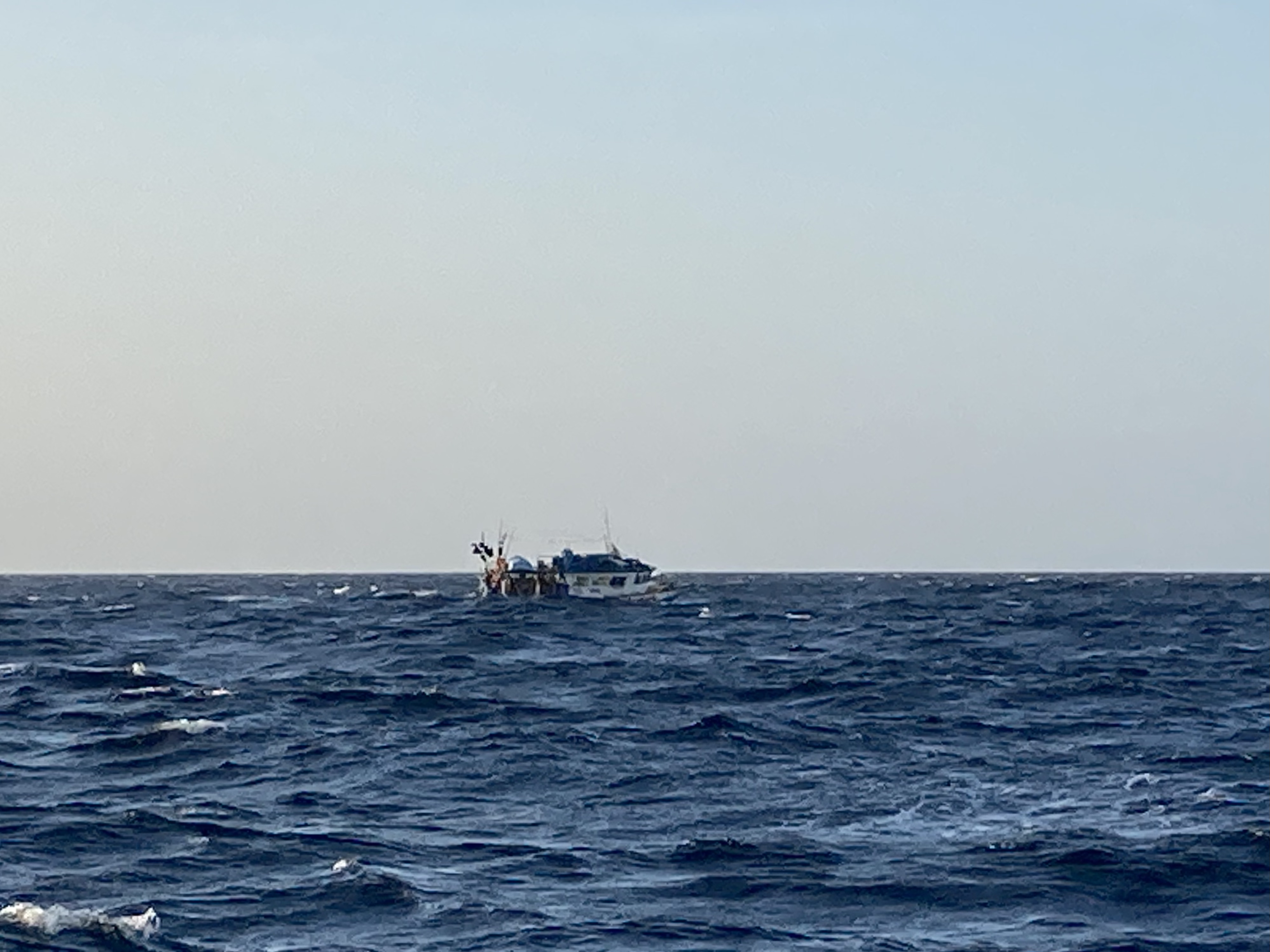
The Predict Wind calculation of ten hours to get around Punta Mala seemed more than optimistic. It was the best of four forecast calculations ranging from ten to seventeen hours. Amazingly, it actually took us only nine hours [yes…for dirt dwellers doing the calculation, that averaged a snail’s pace of slightly more than twice walking speed, or not even that if you are a fast walker].
During the day we were treated to a visit by a pod of enthusiastic dolphins, quite different from those we had seen in the Atlantic.
For us, it was an epic, exhilarating sail from Las Perlas to Punta Mala, during which we averaged a screaming pace of over eight knots for the entire nine hours. Even once the darkness of night had set in, an incredible full moon illuminated the watery path before us. Eventually, after passing Punta Mala, we found ourselves having to finally turn on our engine when the wind completely died.
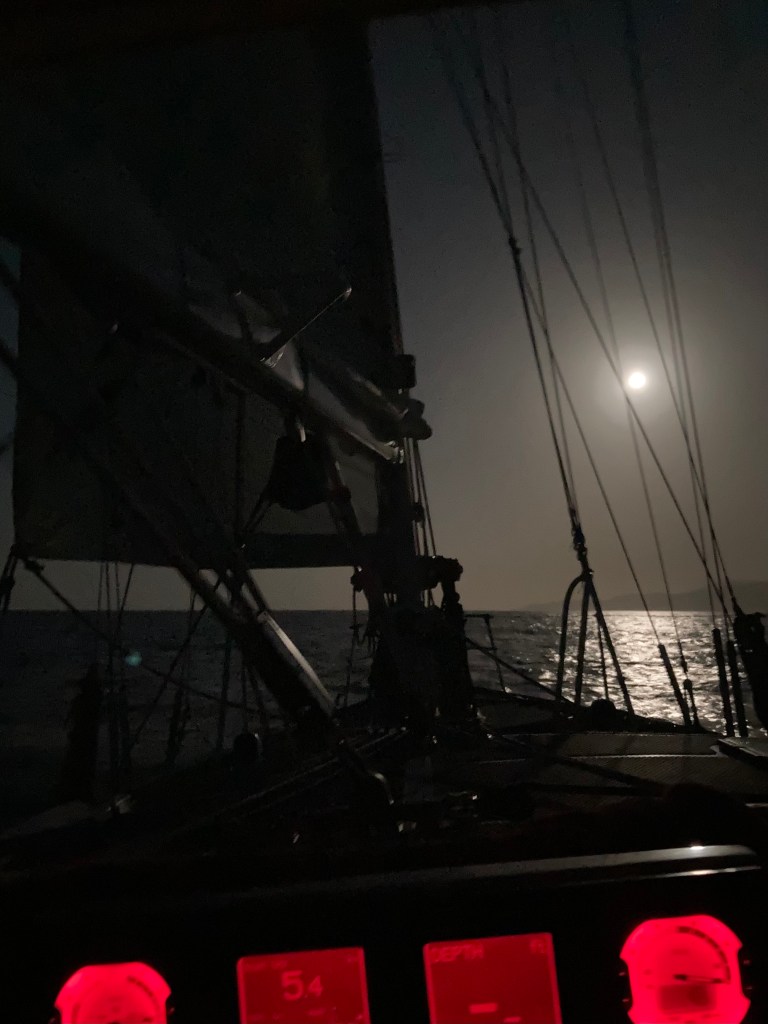
Despite our own reluctance to run the engine, our battery bank would be much more appreciative of the gesture.
Yet to our dismay, even with the Perkins diesel engine churning away, the number on the ammeter remained negative and the charge deficit continued to grow.
The alternator wasn’t charging at all.
Shit.

By sunrise, the charge deficit showing on the digital display was the highest it had been since we had replaced the entire house battery bank at the end of our haul out in June. At least now, as the sun climbed higher and higher, our solar panels were being fed and the batteries would begin to recover.
Twenty one hours and one hundred fifty nautical miles after departing Isla San Jose in Las Perlas, we set the hook in the expansive though calm bay of Bahia Arenas and immediately chose sleep over troubleshooting.
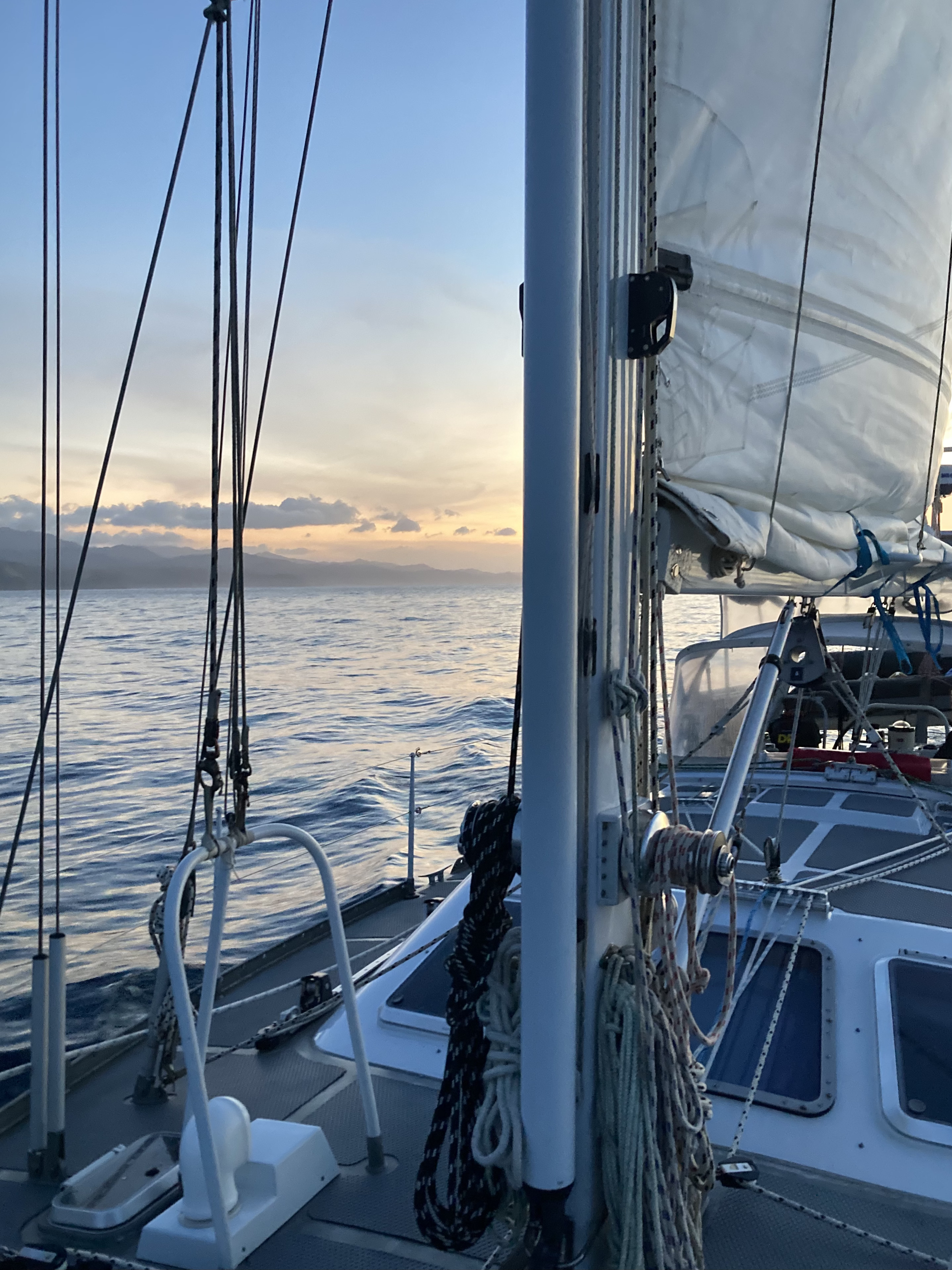
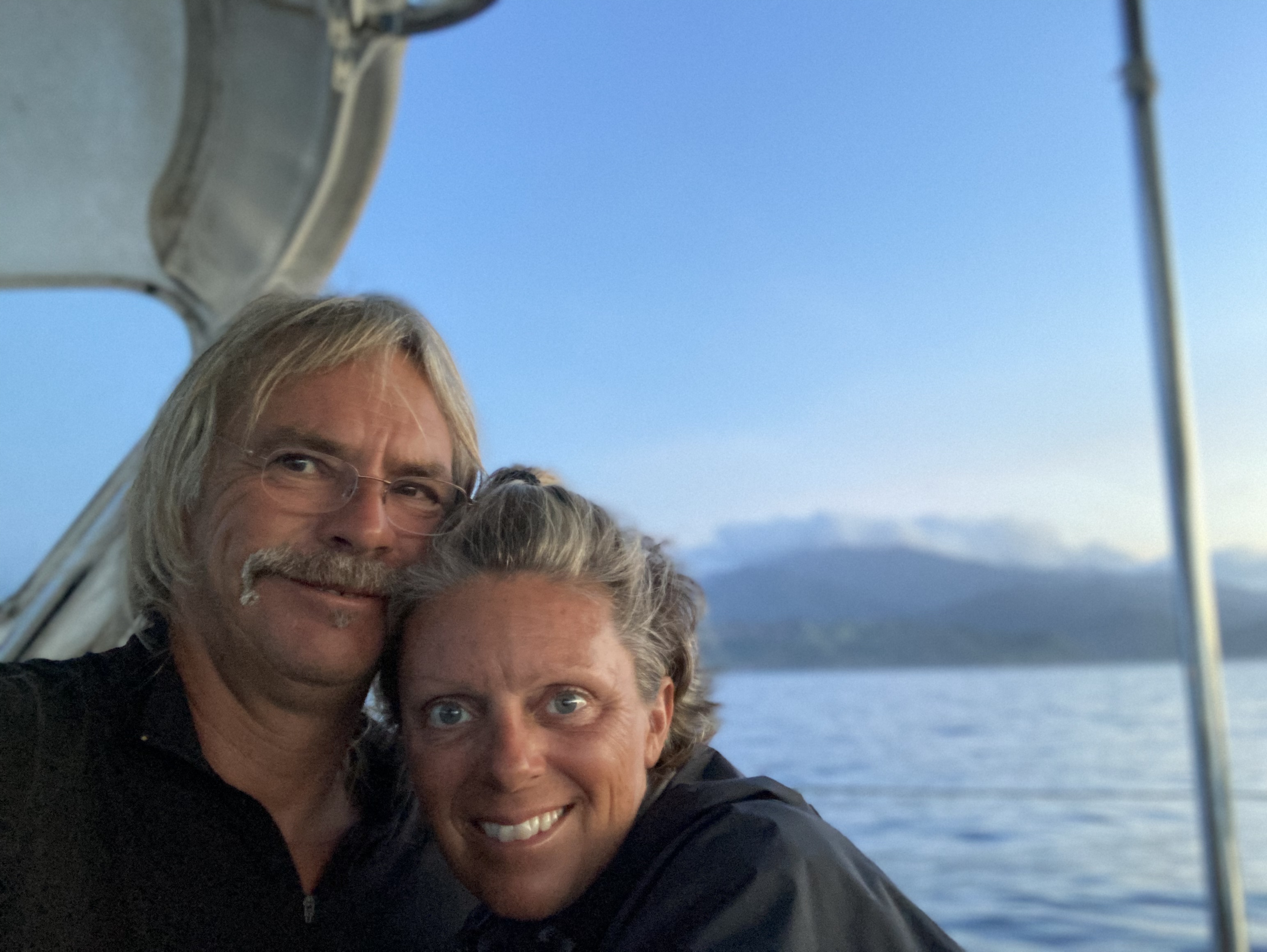
By sundown a number of tests had confirmed what we already suspected. The alternator was dead. No output at all.
It was, by no means, an immediate emergency.
The house batteries were only six months old and were getting nearly fully charged every day just with solar collection. Currently, Panama was in its dry season. We hadn’t collected a drop of rain catch since before Christmas.
Still, our location pretty much qualified as middle of no where and we really needed our alternator running.
Unfortunately, diagnosing the exact problem inside the alternator was a bit academic since we had no spare parts aboard that would facilitate a repair.
Fortunately, during our recent visit to the States, Kris managed to convince me that the overall benefits of having a spare alternator aboard Exit far outweighed the overall pain in the ass of carrying that alternator back to Exit.
No parts… but we actually had the entire brand new alternator. Sweet. The only problem was we only had one pulley. On the broken alternator. And it was not going to budge.
Hours became days.
I tried everything except the one thing I knew would work but didn’t have… an impact wench.
Half inch drive socket wrench.
Half inch drive socket wrench with a breaker bar.
Half inch drive socket wrench with an even bigger breaker bar.
The leverage didn’t matter because the damn pulley kept spinning.
Holding it with a towel didn’t help.
Wrapping a belt around the pulley slipped.
An oil filter wrench didn’t work.
Channel locks couldn’t stop the pulley.
The nut was too tight; the pulley wouldn’t stop turning; the alternator itself couldn’t be secured well enough.
It became an exercise in frustration.
Eventually, desperate and somewhat delirious, I concocted what I deemed would be a victorious apparatus of MacGyver proportions to get that damned pulley off — a V-belt with the teeth wrapped around the alternator fan to grip, twisted into a tourniquet and held by the handle of a hammer, supplemented with a pair of channel locks holding the pulley which had been wrapped with electrical tape for protection, all wedged against a deck cleat and held in place by one person while a second got on the 22mm nut with a socket attached to a two foot breaker bar.
Confident that this would be our moment of glory, I held tight and Kris leaned into the breaker bar.

It slipped immediately.
Arrrrrrrrrrrrrrrrrrrrrgh.
Cursing my lack of an impact wrench for the thousandth time, I crawled back into the engine compartment and completely reattached the damn alternator and tightened the belt.
Why? To remove it, of course.
The final option.
The thinking was: the alternator would be bolted to the engine block to keep it secure from movement; the belt would be tensioned back up as tight as possible to keep it gripping the pulley; the engine compression would hold it all in place against the torque. Why hadn’t we tried it earlier? Because it was a giant pain to reattach something that had to come right back off again.
Plus, it didn’t do shit. After all that, the pulley rotated backwards with almost no effort applied.
Arrrrrrrrrrrrrrrrrrrrrgh.
Like Charlie Brown and that damn football.
The alternator got pulled out once again.
Fuck.
We concluded that Santa Catalina, a bit less than forty miles away, was the only possibility for the near future. If we hoped to either get the broken alternator repaired or, at the least, have the pulley removed so the new alternator could be used, we’d need to get to a town of some sort.
Consequently, we enjoyed five hours of brilliant sailing followed by two solid hours of smashing headlong into three to five foot waves directly on our bow in winds surpassing thirty knots at times. Oh, the constantly swinging pendulum.
Varying conditions come with the territory, sure. But thirty degree wind shifts accompanied by nearly instantaneous fifteen knot increases in wind speed make for some pretty interesting moments.
With the anchor finally set outside a tiny town known more by surfers than typical tourists, we waited another thirty six hours for the wind to die down enough for us to brave a beach landing in our dinghy.
Sailboat repair, even in a local fishing village, would be a long shot. But car repairs would not. And our alternator was no different from a car alternator. As luck would have it, Santa Catalina appeared to have more cars than anyplace we had been since Panama City.
Kris had learned of a possible source of help from a couple on another boat at anchor who had already been ashore. A guy by the name of Senior Roberto who owned the first restaurant on the right.
When we got there, the restaurant was closed. A guy sitting at one of the outside tables informed us Senior Roberto was gone until afternoon. He tried to call but no one picked up.
As best we could, we tried to communicate our situation and need for a mechanic, machine shop, or car repair shop. We pulled the alternator out of the backpack to help clarify.
While the guy was looking through the contact list on his phone, trying to figure who he knew that could possibly help us, another man walked past the restaurant in the middle of the road. He looked over, saw the alternator, and asked, “Mechanico?”
“Si,” we nodded.
He smiled and tilted his head slightly, indicating further up the road, then gestured with his hand for us to follow.
A short walk brought us to a driveway that had a half dozen or so guys standing around watching two other guys work on the lower unit of an outboard engine.
They all seemed genuinely friendly and interested. After a bit of circuitous back and forth [saying something is broken is pretty straightforward, however, explaining what you need is not], we were told to come back with the other alternator as well. The guy was confident he could get us sorted out.
Back to the dinghy, which was now sitting on a sprawling beach about fifty yards from the water, thanks to a twelve foot lowering tide. This was one time we especially heralded the joy of having purchased a used $350 set of dinghy wheels for $40 in Bocas Del Toro over a year ago, anticipating this very need once we reached the mighty Pacific Ocean.
Back across a treacherous stretch of water rife with numerous dinghy puncturing rocks lurking just under the water’s surface. Back to Exit. Pick up the second alternator. Back in the dinghy. Back across the treacherous stretch of water rife with numerous dinghy puncturing rocks lurking just under the water’s surface. Another beach landing. Since the tide would be rising soon and we didn’t know how long we’d be, we had to haul the dinghy back to almost the same spot we had left it the first time. Back up the road, past the restaurant, to the driveway with the half dozen or so guys still working on the outboard bottom unit.
Whew.
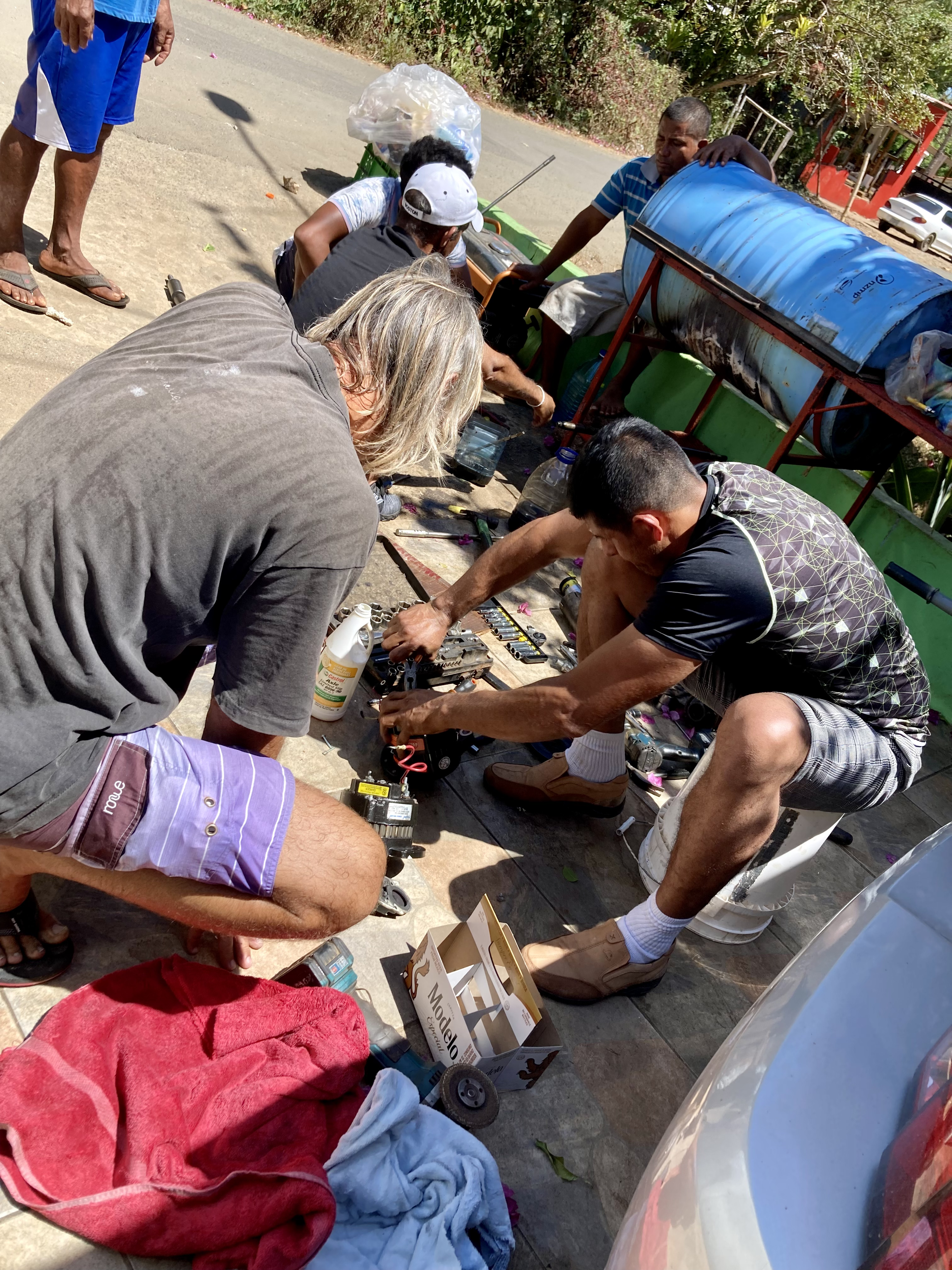

It took him about two seconds.
The impact wrench was so fast he was able to hold the pulley with his bare hand.
Damn.
Without parts, the actual repair of our old alternator would have to wait. But the new one could now be installed.
It all went back together without a hitch. And just like that, once again, we had an alternator that could charge batteries.
VICTOOOOOOOOOOOOOOOORRRRRRRRRRRRRYYYYYYYYYYYY!
An impact wrench is now officially at the top of my priority list for acquisition… before something else breaks.
Like pissing into the wind or taking a dump upside-down, using the wrong tool may ultimately get the job done, but its gonna make things a lot more complicated than necessary, a lot more messy than necessary, and inevitably come with unforeseen consequences.
So let that be a lesson to you kids – always use the right tool for the job… and only take care of business right side up with your back to the wind.

